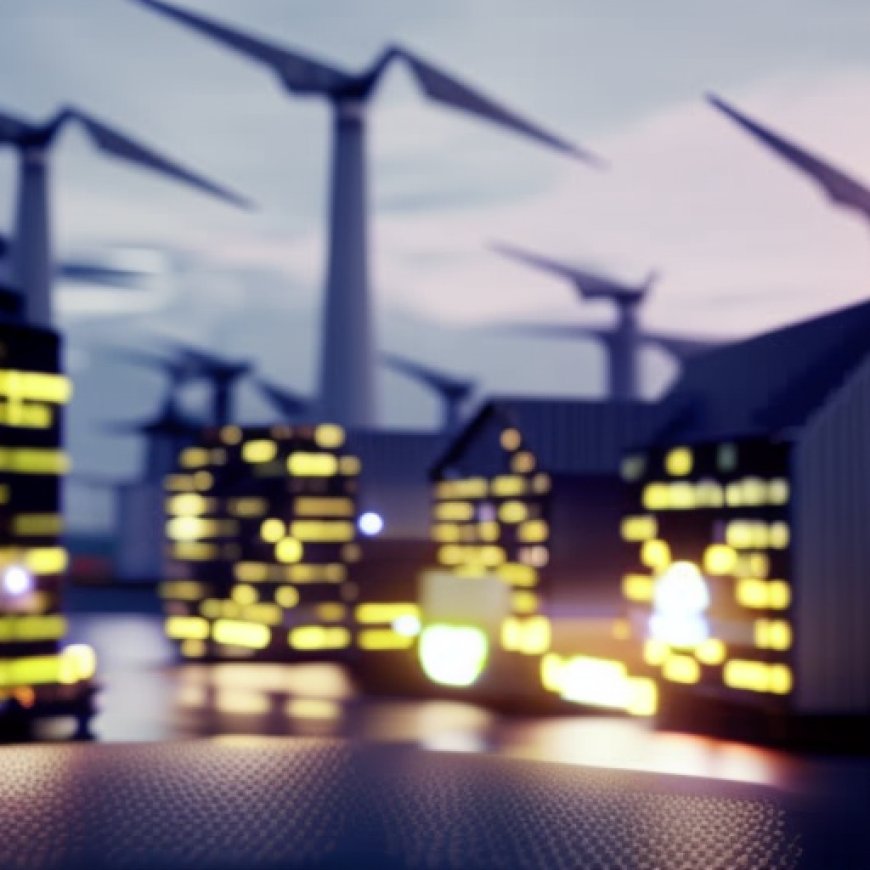In focus: Energy efficient buildings – delivering energy and cost savings for EU citizens
In focus: Energy efficient buildings - delivering energy and cost savings for EU citizens Energy


The Energy Performance of Buildings Directive and the Sustainable Development Goals (SDGs)

The recently adopted revision of the Energy Performance of Buildings Directive supports the EU’s wider effort to reach a carbon neutral economy, while improving people’s quality of life, lowering the energy bills of households and businesses, boosting the construction ecosystem, and contributing to Europe’s energy independence in line with the REPowerEU Plan. The Directive has a particular focus on worst-performing buildings and households exposed to energy poverty and vulnerable to energy prices.
Why energy efficiency?
Preventing the avoidable waste of energy significantly reduces the amount of energy we need, allowing us to replace the EU’s traditional dependency on fossil fuels with sustainable energy sources, more efficiently and at a lower cost. Additionally, improved energy efficiency is crucial to reach EU’s energy and climate goals. The Energy Efficiency First Principle enshrines the importance of energy efficiency into EU law. It means that energy efficiency must be considered by EU countries in all relevant policy and major investment decisions taken in the energy and non-energy sectors.
Buildings, as Europe’s single largest energy consumer – responsible for over 40% of the energy we use and a third of our greenhouse gas emissions – offer significant potential for energy efficiency gains and the integration of renewables. The recently strengthened legislation on the energy performance of buildings delivers on the EU’s Renovation Wave strategy, launched in 2020, which aims to double the renovation rate and foster deep renovation.
For citizens and businesses, improving the energy performance of buildings will make them easier and cheaper to heat or cool to the desired level. It cuts down on unnecessary waste of energy and consumer expenditure due to problems like poorly insulated walls or drafty windows.
With 9.3% of EU citizens unable to keep their homes adequately warm in 2022, energy renovations offer a concrete and durable solution to lift many of these people out of energy poverty. In the construction sector, small and medium-sized enterprises (SMEs) particularly benefit from a boosted renovations market, as they make up 99% of EU construction companies and 90% of the employment in the sector.
‘Improving the energy performance of buildings is vital for reaching our ambition of climate-neutrality and will bring concrete benefits to our citizens. Renovations are investments into a better future. They will improve quality of life, allow people to invest their savings elsewhere, and boost our economy. I trust this agreement will allow to spur a renovation wave across the whole Union, while respecting the diversity of the EU’s building stock.’
Kadri Simson, Commissioner for Energy
Improving the energy performance of existing buildings
In many cases, individual measures like installing new windows, insulating the roof or walls, or changing the boiler, have the potential to deliver substantial energy performance improvements – without the need for more extensive renovation works.
Under the revised legislation, EU countries have committed to taking national measures to reduce the average energy use of residential buildings by 16% by 2030 and 20-22% by 2035. Each country will decide how to achieve this and which buildings to focus on, taking into account factors such as the existing building stock and the local climate. Governments may also choose to exempt certain categories of buildings from the legislation entirely, such as holiday homes or historical buildings.
To ensure that vulnerable citizens and low-income households benefit from these energy performance improvements, EU countries have agreed that at least 55% of the energy savings in the residential sector will be delivered through renovations of buildings with the lowest energy performance. Furthermore, financing measures will be required to incentivise and accompany renovations and will have to focus on vulnerable people in particular. Governments will have to ensure adequate safeguards for tenants, such as through rent support or caps on rent increases which may otherwise arise from energy performance improvements.
For non-residential buildings, minimum energy performance standards will be gradually introduced.
This will trigger improvements in the energy performance of the 16% worst-performing non-residential buildings in each country by 2030 and the 26% worst-performing buildings in this category by 2033.
New buildings – zero emissions
To ensure that new buildings are fit for purpose in Europe’s climate neutral future, all new residential and non-residential buildings must have zero on-site emissions from fossil fuels, as of 1 January 2028 for publicly owned buildings and as of 1 January 2030 for all other new buildings.
To further support the achievement of zero-emissions, solar installations will become the norm for new buildings and will gradually be rolled out on public and other non-residential buildings. Electric vehicle recharging infrastructure and sufficient parking spaces for bicycles will also have to be provided in new buildings to help facilitate more sustainable transport within the broader context of a carbon-neutral Europe. The rules apply also for existing buildings that undergo major renovation, as well as existing non-residential buildings with more than 20 parking spaces.
Explore Europe’s current building stock
75% of the EU’s building stock has a poor energy performance. Updated in March 2024 with an improved user interface and greater data availability, the EU Building Stock Observatory (BSO) is a European Commission webtool which allows users to monitor the energy performance of buildings across Europe. It includes a database and factsheet for each
SDGs, Targets, and Indicators
-
SDG 7: Affordable and Clean Energy
- Target 7.3: By 2030, double the global rate of improvement in energy efficiency
- Indicator 7.3.1: Energy intensity measured in terms of primary energy and GDP
-
SDG 11: Sustainable Cities and Communities
- Target 11.4: Strengthen efforts to protect and safeguard the world’s cultural and natural heritage
- Indicator 11.4.1: Total expenditure (public and private) per capita spent on the preservation, protection, and conservation of all cultural and natural heritage
-
SDG 13: Climate Action
- Target 13.2: Integrate climate change measures into national policies, strategies, and planning
- Indicator 13.2.1: Number of countries that have integrated mitigation, adaptation, impact reduction, and early warning measures into their national policies, strategies, or planning
Explanation:
-
SDG 7: Affordable and Clean Energy
The article highlights the importance of energy efficiency in reducing energy waste and transitioning to sustainable energy sources. This aligns with SDG 7’s focus on affordable and clean energy. The specific target mentioned is Target 7.3, which aims to double the global rate of improvement in energy efficiency by 2030. The indicator 7.3.1, measuring energy intensity in terms of primary energy and GDP, can be used to track progress towards this target.
-
SDG 11: Sustainable Cities and Communities
The article emphasizes the potential for energy efficiency gains and the integration of renewables in buildings, which are a significant energy consumer and emitter of greenhouse gases. This relates to SDG 11’s goal of creating sustainable cities and communities. While no specific target is mentioned in the article, Target 11.4, which focuses on protecting and safeguarding cultural and natural heritage, can be relevant as energy-efficient buildings contribute to the preservation of resources. The indicator 11.4.1, measuring total expenditure per capita spent on heritage preservation, can be used to measure progress towards this target.
-
SDG 13: Climate Action
The article highlights the importance of improving energy performance in buildings to achieve climate neutrality. This aligns with SDG 13’s focus on climate action. The specific target mentioned is Target 13.2, which calls for the integration of climate change measures into national policies, strategies, and planning. The indicator 13.2.1, measuring the number of countries that have integrated climate change measures into their policies or planning, can be used to track progress towards this target.
Table: SDGs, Targets, and Indicators
| SDGs | Targets | Indicators |
|---|---|---|
| SDG 7: Affordable and Clean Energy | Target 7.3: By 2030, double the global rate of improvement in energy efficiency | Indicator 7.3.1: Energy intensity measured in terms of primary energy and GDP |
| SDG 11: Sustainable Cities and Communities | Target 11.4: Strengthen efforts to protect and safeguard the world’s cultural and natural heritage | Indicator 11.4.1: Total expenditure (public and private) per capita spent on the preservation, protection, and conservation of all cultural and natural heritage |
| SDG 13: Climate Action | Target 13.2: Integrate climate change measures into national policies, strategies, and planning | Indicator 13.2.1: Number of countries that have integrated mitigation, adaptation, impact reduction, and early warning measures into their national policies, strategies, or planning |
Behold! This splendid article springs forth from the wellspring of knowledge, shaped by a wondrous proprietary AI technology that delved into a vast ocean of data, illuminating the path towards the Sustainable Development Goals. Remember that all rights are reserved by SDG Investors LLC, empowering us to champion progress together.
Source: energy.ec.europa.eu

Join us, as fellow seekers of change, on a transformative journey at https://sdgtalks.ai/welcome, where you can become a member and actively contribute to shaping a brighter future.







